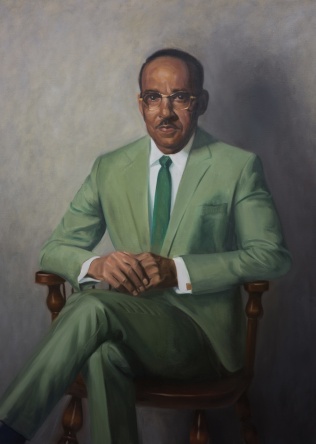Vivien Thomas (1910–1985)
Vivien Thomas was the surgical assistant to Dr. Alfred Blalock. Mr. Thomas secured a job as a Vanderbilt laboratory assistant with Dr. Blalock in 1930, rapidly mastered complex surgical techniques and research methodology, and began doing the work of a postdoctoral researcher in Dr. Blalock’s lab. This despite the fact that, as an African American in a segregated city, Mr. Thomas was not accorded the pay or the recognition matching his role and his talents.
The two men began experimental work in vascular and cardiac surgery. Thomas used his background in carpentry to design many of the surgical instruments used by Blalock in their experiments and was a major contributor in the development of critical operative techniques. When Dr. Blalock was offered the position of chief of Surgery at Johns Hopkins in 1941, he insisted that Mr. Thomas accompany him. Mr. Thomas was charged with the task of creating a ‘blue baby’-like condition (cyanosis) in a dog, then correcting the condition by means of the pulmonary-to-subclavian anastomosis. In 1944, Mr. Thomas stood on a step stool behind Dr. Blalock, coaching him through the first such procedure in a human.
After Dr. Blalock’s death, in 1964, Mr. Thomas remained at Hopkins as director of Surgical Research Laboratories. He mentored a number of African American lab technicians as well as Hopkins’ first black cardiac resident, Vanderbilt graduate Dr. Levi Watkins, Jr., whom Thomas assisted with his groundbreaking work in the use of the automatic implantable defibrillator.
Mr. Thomas received an honorary Doctor of Laws degree in 1976 from Hopkins and was appointed instructor in Surgery.
The close professional relationship between Mr. Thomas and Dr. Blalock was the subject of a PBS documentary, “Partners of the Heart,” and an HBO movie, “Something the Lord Made.”
In July 2018, the General Assembly of the State of Tennessee honored Mr. Thomas with an official proclamation and in 2021 one of the roads leading to VUMC from 21st Avenue South was renamed Vivien Thomas Way.
